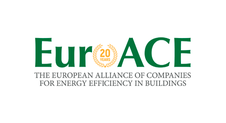Search eceee proceedings
The role of data centres in reducing energy consumption through policy measures
Panel: 9. Improving energy efficiency in ICT, appliances and products
This is a peer-reviewed paper.
Authors:
Larisa Maya Altamira, Viegand Maagøe, Denmark
Baijia Huang, Viegand Maagøe, Denmark
Jan Viegand, Viegand Maagøe, Denmark
Davide Polverini, DG GROW — Directorate-General for Internal Market, Industry, Entrepreneurship and SMEs, European Commission, Belgium
Sophia Flucker, Operational Intelligence Ltd
Abstract
With increased digitalization and growing trends like Internet of Things and the Industry 4.0, there is an increased and rapid demand for computing power and storage capacity provided by data centres and enterprise server rooms. Ownership models are also evolving rapidly from in-house to outsourcing and Managed Service Providers centralizing computing and data storage. According to recent studies, EU28 data centres’ electricity demand in 2015 was 78 TWh/year and is projected to be 160 TWh/year in 2030. Globally, the increase is even higher: From 203 TWh/year in 2015 to 3390 TWh/year in 2030. These are important contributions to the EU/global electricity demands. Making future consumption projections is challenging due to the fast-paced market evolution.
At EU level it can be foreseen that, on one side, larger, more centralized data centres may provide overall energy savings due to higher IT equipment utilization, reduced need for cooling and better market conditions to supply renewable electricity. On the other side, due to factors such as low latency or simply inertia and very recent trends such as ‘Fog computing’, medium-small sized data centers would still make an important part of the market. In any case, the market on its own will not unleash the full saving potential and the role of policy measures becomes critically important.
This paper investigates the potential effect of two future measures: The servers and storage Ecodesign Regulation and the Green Public Procurement (GPP) criteria for Data Centres. The Ecodesign Regulation is expected to bring savings of 6.1 TWh/year by 2030, which could be larger if the scope would extend to the mechanical and electrical systems. In this way GPP could support it as it broadens the scope. The paper also presents aspects of resource efficiency and their trade-off with energy efficiency. Finally, it touches upon new trends such as distributed cloud computing and how it relates to centralised cloud computing.
Downloads
Download this paper as pdf: 9-093-19_MayaAltamira.pdf
Download this presentation as pdf: 9-093-19_MayaAltamira_Presentation.pdf
Panels of
1. The dynamics of limiting (energy) consumption
2. What's next in energy policy?
4. Monitoring and evaluation for greater impact
5. Smart and sustainable communities
7. Make buildings policies great again
8. Buildings: technologies and systems beyond energy efficiency
9. Improving energy efficiency in ICT, appliances and products

























